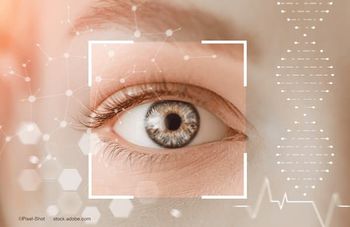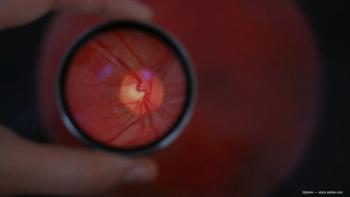
Laser-assisted procedure brings ease, precision & safety to deep sclerectomy
CO2 laser-assisted sclerectomy surgery performed with a proprietary platform offers an effective and safer alternative to the manual non-penetrating deep sclerectomy procedure for the management of medically uncontrolled open-angle glaucoma.
Take-home message: CO2 laser-assisted sclerectomy surgery performed with a proprietary platform offers an effective and safer alternative to the manual non-penetrating deep sclerectomy procedure for the management of medically uncontrolled open-angle glaucoma.
By Cheryl Guttman Krader Reviewed by Prof. Svetlana Anisimova, MD, PhD
CO2 laser-assisted sclerectomy surgery (CLASS) performed with a proprietary platform (IOPtiMate System, IOPtima, Kiryat Atidim, Tel Aviv, Israel) is a non-penetrating procedure for management of medically uncontrolled open-angle glaucoma that offers efficacy comparable to trabeculectomy and non-penetrating deep sclerectomy (NPDS), but with superior safety, according to Prof. Svetlana Anisimova, MD, PhD.
Prof. Anisimova, general director at the EYE Center, Vostok-Prozrenie, Moscow, Russia, has been a pioneer in the development of NPDS and explained that by implementing use of the laser for dissecting the scleral flap, CLASS overcomes the major challenge of NPDS, which is the risk of inadvertent trabeculo-Descemet’s membrane perforation.
Because the wavelength of the CO2 laser is absorbed by water, the device’s cutting effect is halted when the dissection reaches the desired endpoint of fluid percolation.
Simplify the surgery
In addition, the laser-assisted procedure and features of the proprietary platform simplify the surgery, further reducing the prolonged learning curve characteristic of manual NPDS, Prof. Anisimova said.
“NPDS has a better safety profile than trabeculectomy, but technical difficulty is one of the main drawbacks of NPDS,” she said. “In the hands of surgeons new to NPDS performing manual dissection with a knife, there is a high rate of penetration, which leads to the same complications as after trabeculectomy. And, if the dissection doesn’t open the entire width of trabecular, effective filtration may not be achieved.”
CO2 laser-assisted sclerectomy surgery transforms deep sclerectomy into safe, convenient, elegant and precise laser-assisted surgery that can be performed confidently by surgeons with a wide range of experience in filtration surgery. With CLASS, the microdissection is controlled and performed under direct microscopic observation.
“In addition, surgeons do not need to manually dissect layers of sclera and the drainage system or locate the orifice of the Schlemm’s canal as they do in manual NPDS techniques,” she said.
The CO2 laser can be integrated with any ophthalmic microscope, and the novel laser-assisted platform that is used for the CLASS procedure features a micro-manipulating scanner that guides the laser beam, assuring that the sclera is accurately ablated per the pre-selected area and pattern.
Follow-up data
Prof. Anisimova began performing CLASS in June 2009, and has data on 9 eyes with follow-up to 5 years.
Mean (± SD) IOP was 27.3 ± 4.8 mmHg preoperatively, 17.4 ± 2.4 mmHg at 6 months, 18.3 ± 2.1 mmHg at 12 months, and 17.5 ± 1.5 mm at 5 years of follow-up (6 patients were examined 5 years after surgery).
Medication use per patient decreased from an average of 2.5 ± 1.5 preoperatively to 0.5 ± 0.4 at 6 months and 1.6 ± 0.9 at 5 years after surgery.
Additional procedures performed in the series included YAG laser goniopuncture, which was carried out 4 to 10 weeks after the initial surgery in 2 eyes, and combined surgery (NPDS with phacoemulsification) in 1 eye at 4 years after the CLASS procedure.
“Goniopuncture was not considered a reason for failure or an adverse event as it is commonly used after other glaucoma surgeries to maintain or augment the operative results,” Prof. Anisimova said.
The recorded complications were mostly mild and transitory. There were some microperforations, but no macroperforations.
“The microperforations did not affect the safety or efficacy of the surgical outcome and might even have improved filtration,” Prof. Anisimova reported.
Data from 3 years of follow-up in a multicentre study of CLASS show its safety benefits relative to trabeculectomy. The multicentre study included 108 CLASS procedures and their outcomes were compared with a historical control cohort of 105 eyes that underwent trabeculectomy
CO2 laser-assisted sclerectomy surgery was associated with 36% fewer complications (50% versus 86.7%), 33% less vision loss, and 39% fewer cases of cataract development.
Prof. Svetlana Anisimova, MD, PhD
Prof. Anisimova is the General Director at the EYE Center, Vostok-Prozrenie, Moscow, Russia.
Prof. Anisimova has no relevant financial interest to disclose.
Newsletter
Don’t miss out—get Ophthalmology Times updates on the latest clinical advancements and expert interviews, straight to your inbox.








































